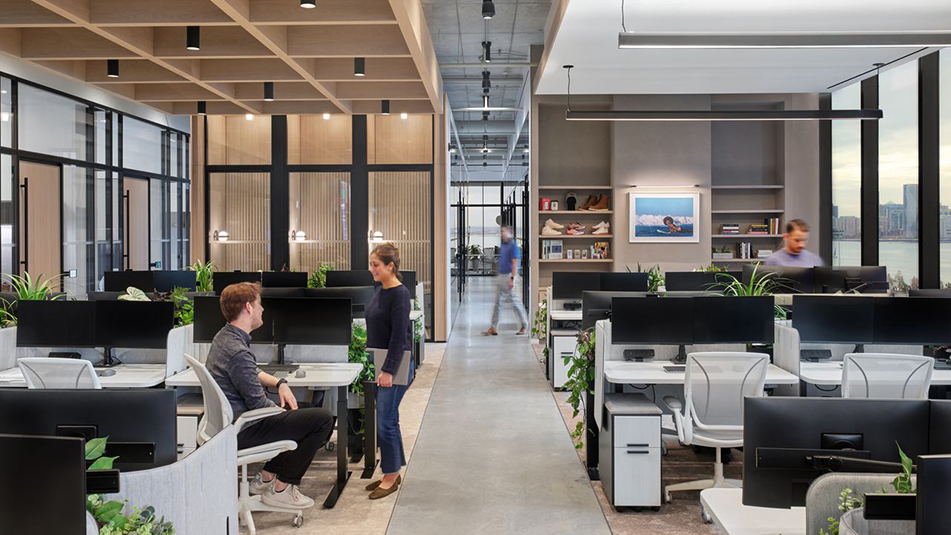Neurodiverse employees and hybrid work solutions: Leveling the playing field
When the pandemic first sent us all home from the office, I was speaking with a client on one of our early Zoom calls. At that time, we both expected Covid-19 to wrap up in 60-90 days tops. As we were talking, to my surprise she said to me, “Between us, I’m loving this. I could not think of anything better than being sequestered in my home, away from everyone. I am an introvert.”
This is not how I saw the pandemic. I enjoy the collaboration that comes from the office, the camaraderie and the energy. The pandemic for me, and many others was anxiety-inducing in its isolation. Medical reports soon began to share statistics regarding increases in diagnoses of depression. Mental health professionals were booked solid. Interestingly however, this was not a universal response. New work styles emerging from the past 24 months have revealed opportunities for employees of a variety of social preferences to now engage in ways that make them most comfortable. After all, diversity, includes how each of us are wired. More specifically, and more complex is the recognition of neurodiversity, or “the idea that people experience and interact with the world around them in many different ways” [1], extends to the workplace. Awareness of neurodiversity creates an opportunity for companies to align their workplace strategy in such a way that it supports this often invisible layer of diversity. Hybrid work actually can help to level the playing field.
Neurodiversity is a familiar topic within school populations. Anyone who is a parent of a school aged child knows this. Students from preschool to post graduates benefit from accommodations which scaffold divergent skill sets. Dyslexia, Autism Spectrum Disorder (ASD), and ADHD for example, are all common learning differences, understood to warrant accommodations in academic environments. Students with these learning profiles are given longer times to take tests, or turn in homework as well as rely on technology tools for the outputs of their work. But what happens when these neurodiverse individuals enter the workforce? Sensitivities to sensory distractions of a busy office can stifle the contribution of an autistic worker who needs quiet and time to think. A dyslexic employee might rely on collaborative work and work product review that are best shared on a joint screen of a Zoom call. An employee with self-regulatory challenges such as ADHD might benefit from the choice of working either from home or at the office as a way to remain engaged. In all of these examples, the hybrid work model allows for the contribution of employees who previously would have been overlooked.
Technology tools which allow for direct, written internal communication help to equalize the voice and frame the thoughts of those who struggle to communicate verbally in the moment. One tool called the “one-pager” creates employee profiles which can help to support and educate about workstyle preferences and sensory issues. “Through this particular tool, a colleague can scan someone’s one-pager before an introduction or interaction and quickly ascertain the best way to deliver a piece of information or the most optimal time or way to reach them.” [2]. While this may sound like extra work, it is a way to educate about “cognitively diverse” employees and respect their need for accommodation. It is also a way to avoid the pitfalls of “proximity bias” that may emerge when people assume that employees who show up to the office are more engaged or ambitious. Disabled employees have a high likelihood of being on the receiving end of proximity bias, due to their request to work from home, so the one-pager establishes a clear understanding of that individual’s needs.
These are some simple solutions to creating a more inclusive workplace, but the key takeaway for those determining the details of the work environment is to make sure that both managers and co-workers are sensitive to the neurodiverse profiles of colleagues and employees. Neurodiversity should be factored into any corporate DEI awareness focus as well as the office design. “Stigma, a lack of awareness, and a lack of appropriate infrastructure (such as office setup or staffing structures) can cause exclusion of people with neurodevelopmental differences.” [3]
This perspective in no way suggests that cognitively diverse employees can only be successful working from home, or that they should be relegated to the home. In fact, there is a great benefit to bringing transparency and visibility to all kinds of disabilities into the physical workplace. The point here is to ask questions about any accommodations that could best be met through a hybrid work model. After all, diversity in the workplace is at its core about breaking down the barriers of entry to success. Great companies and organizations know that talent comes in all kinds of packages, including those which - may not be visible.
Footnotes:
1. Nicole Baumer, MD & Julia Frueh, MD, What is Neurodiversity? Harvard Health Publishing, Harvard Medical School, Nov. 23, 2021
2. Charlie Warzel, Helen Peterson, Out of Office, The Big Problem and Bigger Promise of Working from Home. Knopf, 2021
3. Nicole Baumer, MD & Julia Frueh, MD, What is Neurodiversity? Harvard Health Publishing, Harvard Medical School, Nov. 23, 2021



